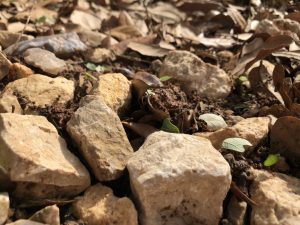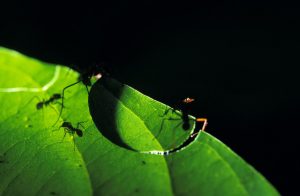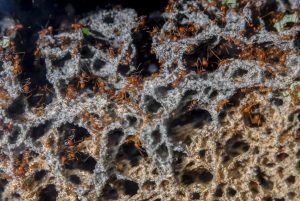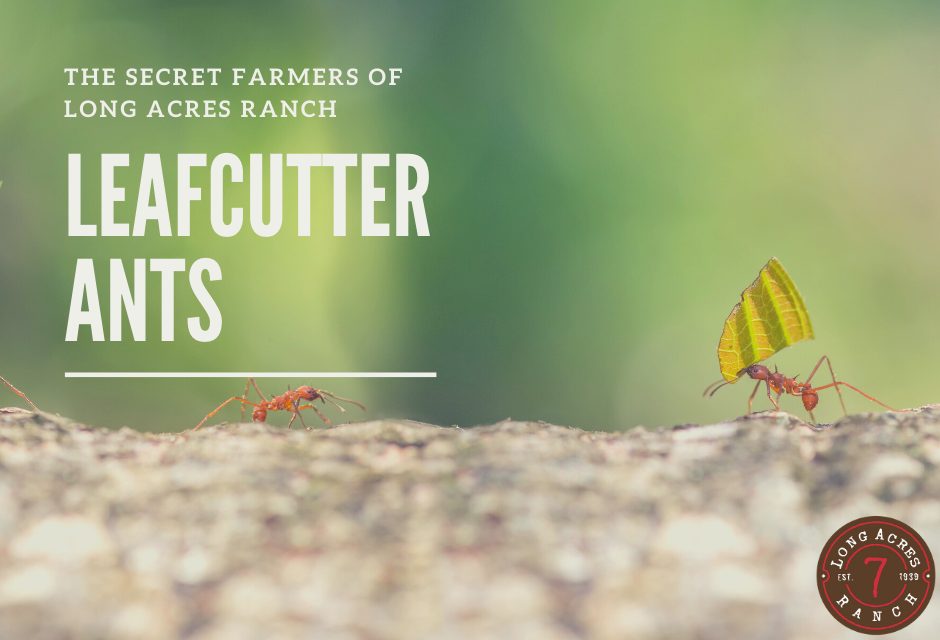
Look closely!
If you walk through the beautiful woods and thickets at Long Acres Ranch, and don’t slow down and observe the small workings of the world around you, you run the risk of missing out on some truly amazing ecological interactions. One such interaction is between the Leafcutter ant (Atta spp.) and the available leaves, grasses and flowers of the area. The species of Leafcutter ant found in Texas, is the Texas Leafcutting ant (Atta texana)

The spectacle!
The first evidence you may see of the Leafcutter ant, might look like a finely organized line of moving leaf parts winding their way along the ground under your feet. Upon closer inspection, you will see that this train of undulating vegetation is actually hundreds of thousands of small red ants working synchronously in a mysterious effort to move these plant parts to an unknown destination. With a small amount of research and persistence, you can follow this train from the source site where the Texas Leafcutting ant is actively foraging by using their mandibles to chew off leaf fragments to the mound, or entrance to the colony.

So, they are storing up food for the winter?
As you begin to ponder the reasons for this mass collection of leaves by these busy insects, you might guess that they are foraging for this vegetation as a means for nutrients. Maybe they are using the vegetative matter to fortify their shelter? Your first answer would have been closer to correct…….with a bit of a twist. You see, Leafcutter ants appear to be gatherers when viewed on the surface landscape, gathering food for the survival of their mound. However, if you are able to move into the subterreanean realm of the Leafcutter ant and observe their habits, you will see that they have evolved to be much more of a skilled farmer, than a gatherer! You would have to look deep into the soil, as many of these farming chambers, can be as deep in to the soil as 8 feet below the surface, with other chambers running as deep as 15-20 feet! (https://citybugs.tamu.edu/factsheets/landscape/ants/ent-1002/)

Leafcutting ants as the “Farmer”!
Slowly over time, the Leafcutter ant has developed a symbiotic relationship, to a fungus which not only do they consume for nutritive purposes but which is also carefully grown by these incredible creatures. Much as human farmers sow and reap for food, such is the story for the Leafcutter ant. “The ants do not eat the leaf fragments they collect, but take them into their underground nest where they use the material to raise a fungus garden. As the fungus grows, certain parts of it are eaten by the ants and fed to the larvae. This fungus is their only known source of food.” Merchant and Drees
Can I find the Texas Leafcutting ant near me?
You have to be in certain parts of the state, to find the The Texas Leafcutting ant, which can be found in South Central and Eastern regions of the state and also in parts of northwestern Louisiana. The Texas Leafcutting ant does have a drawback to it’s presence. In its effort to gather the fungus yielding plant materials, the Texas Leafcutting ants can strip large amounts of foliage which can damage otherwise healthy trees and plants.
Do you want to learn more?
Consider the following resources to find more information about these underground farmers and their complex social networks, provided by the experts at Texas A&M Agrilife.
Sources:
https://citybugs.tamu.edu/factsheets/landscape/ants/ent-1002/
Michael Merchant, Extension Urban Entomologist, with assistance from Dr. Bart Drees (retired), Texas A&M AgriLife Extension Service
http://counties.agrilife.org/waller/files/2018/03/AgMarch2018.pdf

